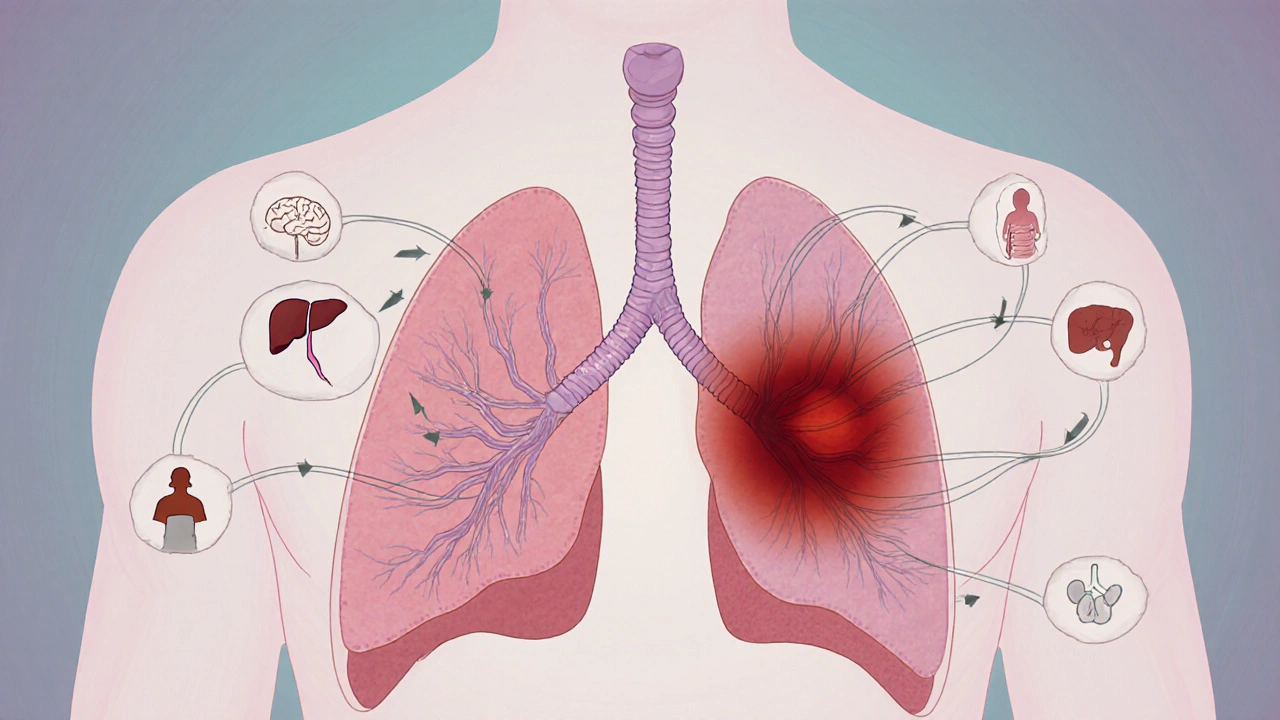Stage 4 Cancer Prognosis: What to Expect and How to Plan
When talking about Stage 4 cancer prognosis, the estimate of how long a person might live after a diagnosis of metastatic disease. Also known as advanced cancer outlook, it helps patients, families, and doctors set realistic goals and choose care pathways.
Understanding the outlook starts with knowing where stage 4 sits in the broader cancer staging, a system that categorizes tumor spread from localized (stage 1) to distant (stage 4). This system influences treatment choices because therapies that work early often lose effectiveness once cancer spreads. For comparison, stage 3 cancer, usually indicates larger tumors or limited regional spread, may still benefit from curative surgery or radiation, while stage 4 typically shifts focus to control and quality of life.
Key Factors Shaping the Outlook
Three main factors drive the prognosis numbers you’ll hear about. First, the type of cancer matters – breast, lung, colorectal, or pancreatic each have distinct survival curves. Second, the location of metastases (bone, liver, brain) changes both symptom burden and treatment options. Third, a patient’s overall health, including age and comorbidities, can speed up or slow down disease progression. These elements together create a personalized picture, not a one‑size‑fits‑all statistic.
What about the word “terminal”? Many people assume stage 4 automatically means terminal cancer. While a large share of stage 4 cases are indeed life‑limiting, the term terminal cancer, a condition where curative treatment is no longer possible and the focus turns to comfort is not synonymous with stage 4. Some patients live years with stable disease thanks to targeted therapies, immunotherapy, or clinical trials.
Another crucial piece is cancer treatment, the array of surgery, chemotherapy, radiation, targeted drugs and immunotherapy used to manage disease. Modern advances mean that even in stage 4, treatment can shrink tumors, relieve pain, and sometimes extend life well beyond historical averages. The choice between aggressive therapy and palliative care is often guided by the prognosis estimate, patient values, and side‑effect tolerance.
Survival statistics are usually reported as median overall survival or 5‑year survival rates. For example, stage 4 lung cancer historically shows a median survival of about 12 months, but newer immunotherapies have pushed that number higher for certain subtypes. These numbers are averages; individual outcomes can vary dramatically.
Family members often wonder how to support loved ones navigating this phase. Communication is key: discuss goals of care early, involve a multidisciplinary team (oncologists, palliative specialists, social workers), and consider advance care planning. Emotional support, nutrition counseling, and manageable exercise routines can all improve day‑to‑day comfort.
If you’re a patient reading this, ask your doctor about specific prognostic markers: tumor genetics, response to the latest scans, and performance status scores like ECOG. These details refine the broad stage 4 label into a clearer picture of what to expect.
Below you’ll find a curated set of articles that break down each of these topics in plain language. From the science behind why stage 4 differs from stage 3, to real‑world tips for handling the emotional toll, the collection aims to give you actionable insights and credible information you can use right now.






